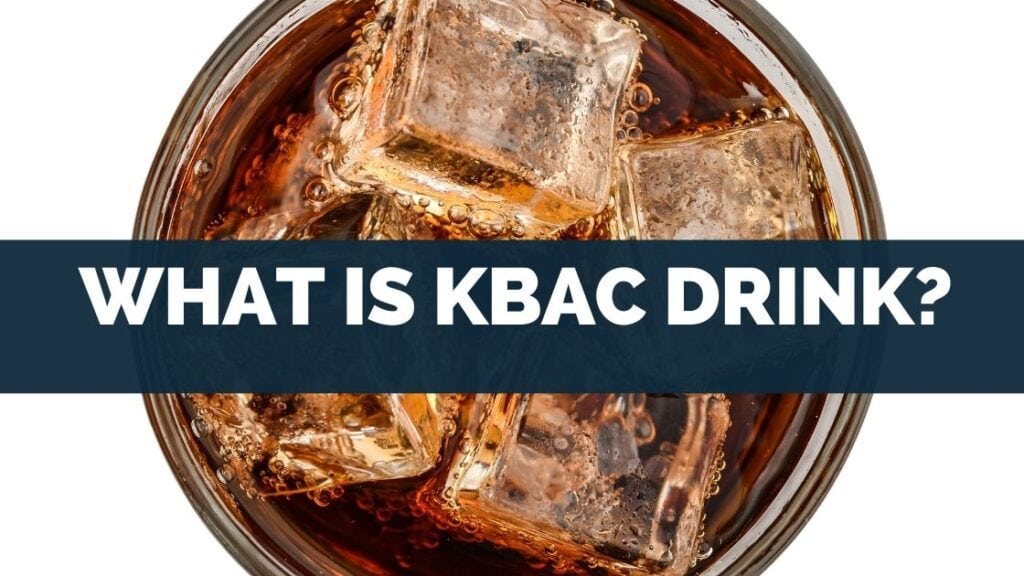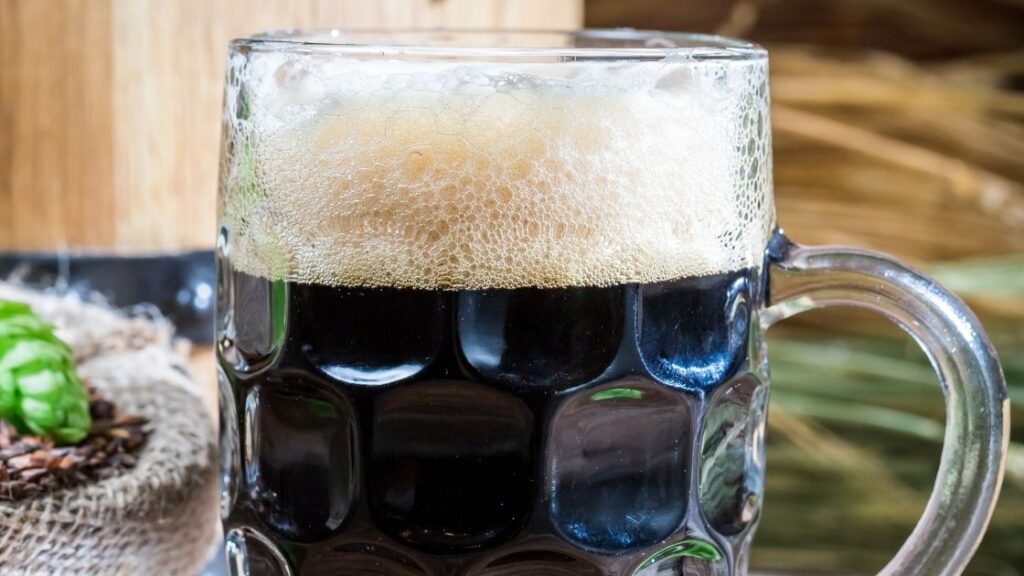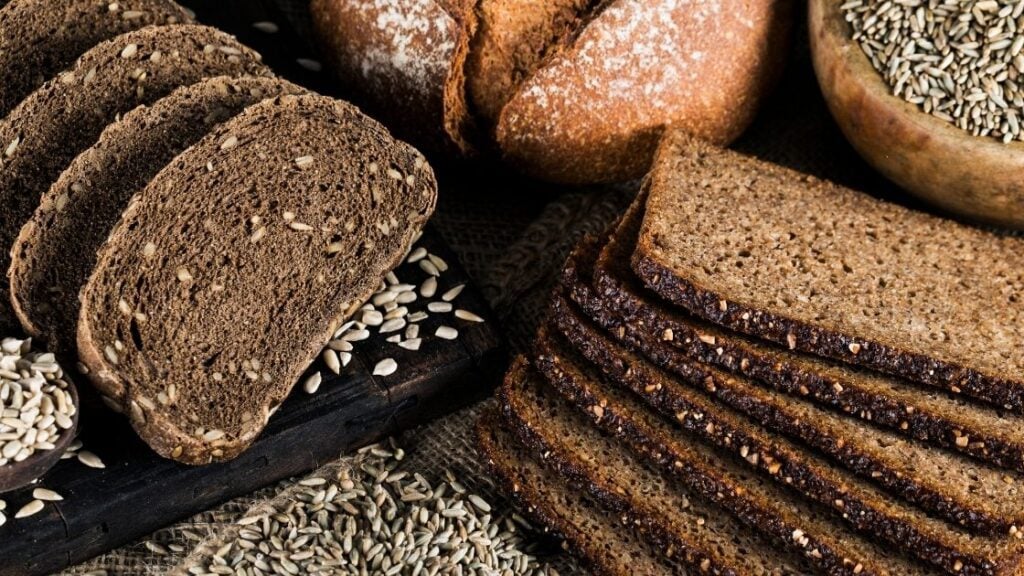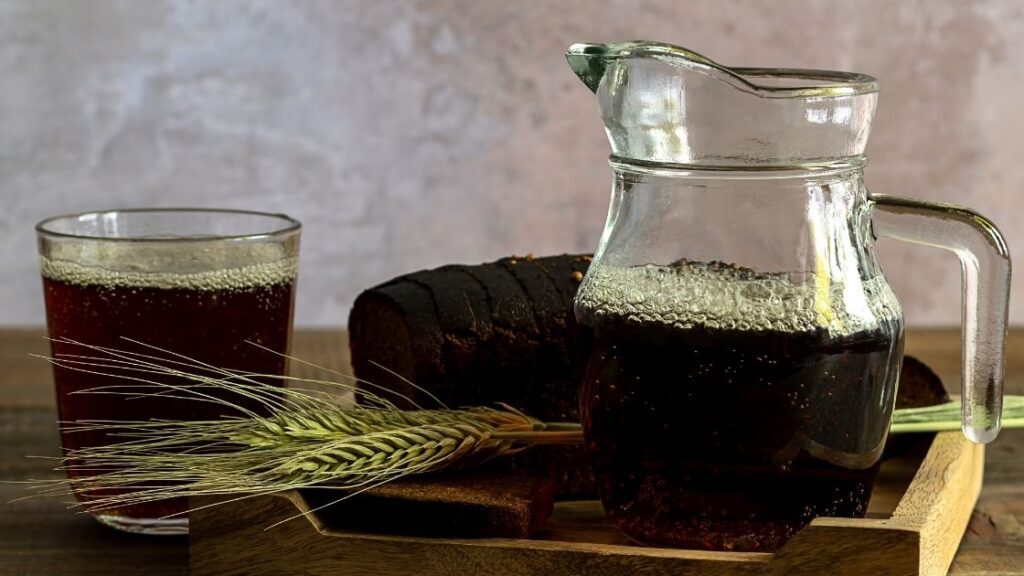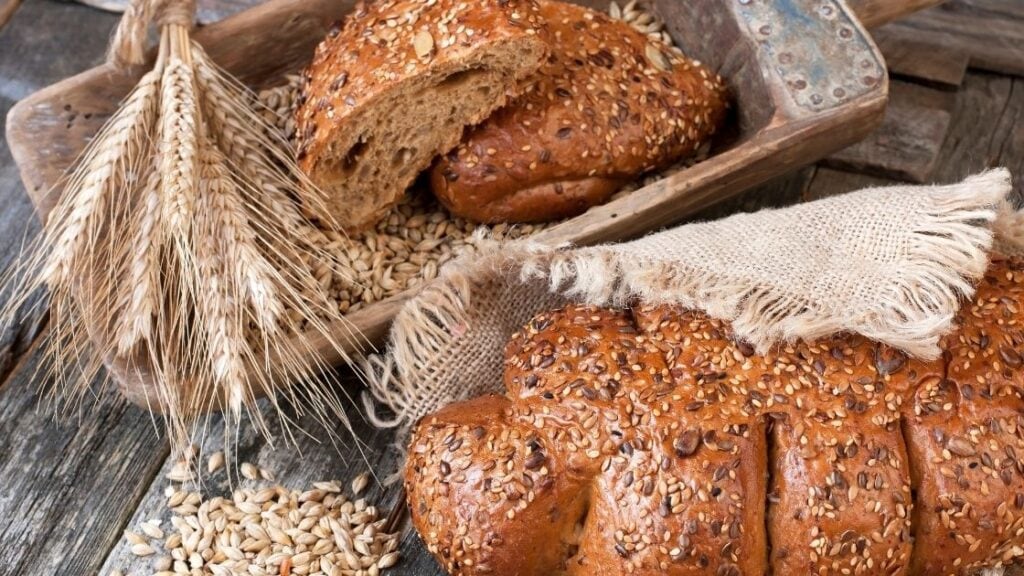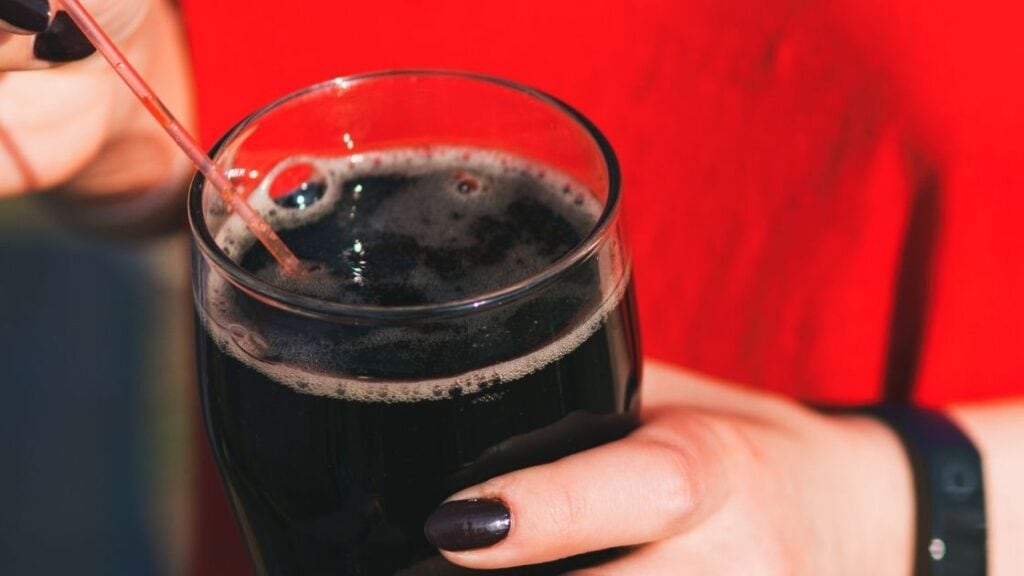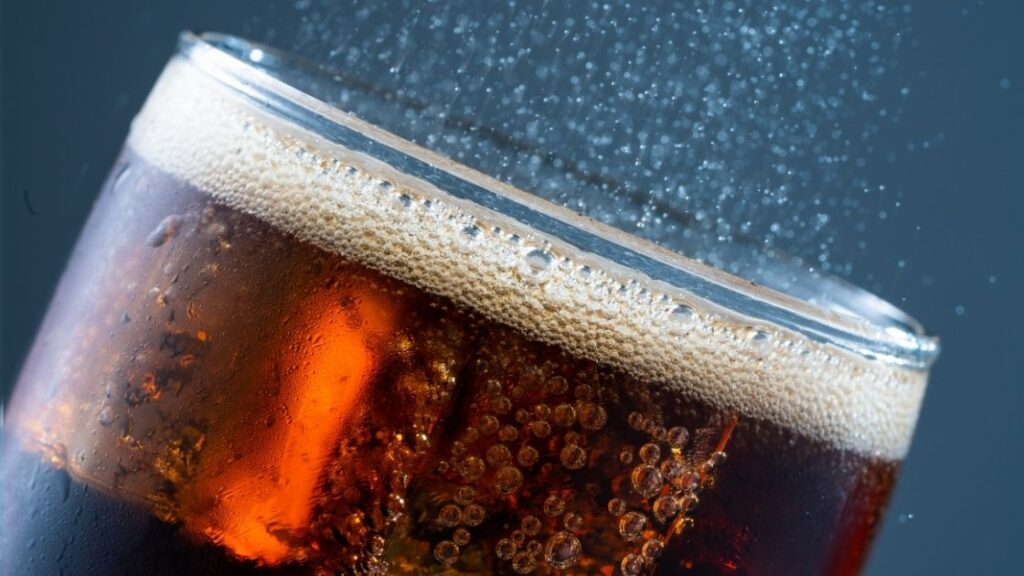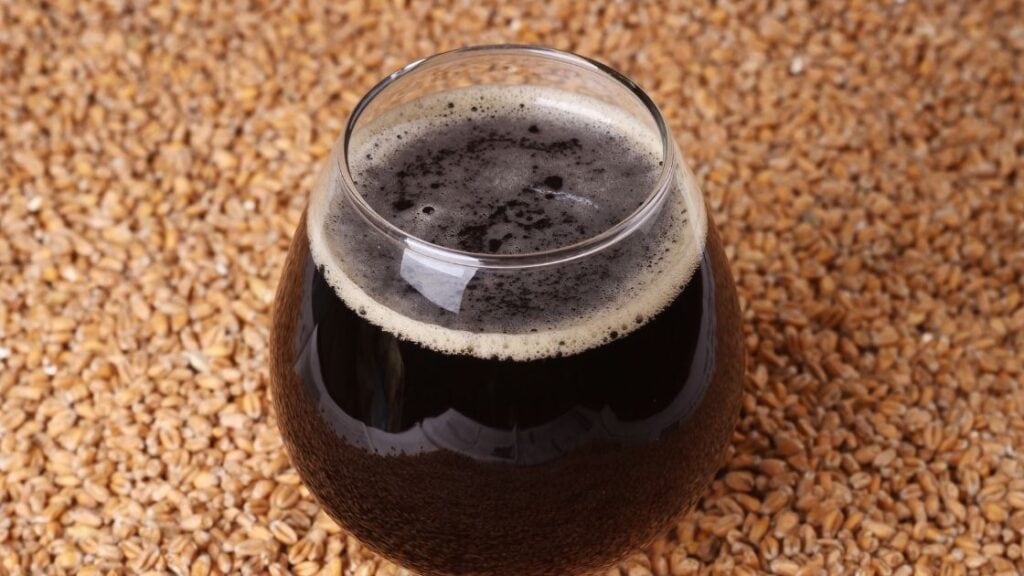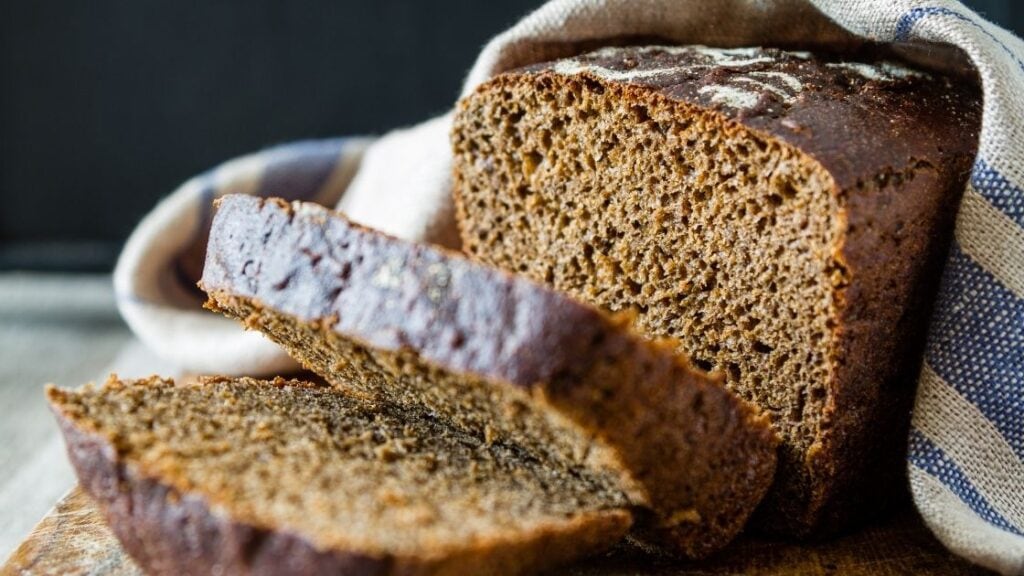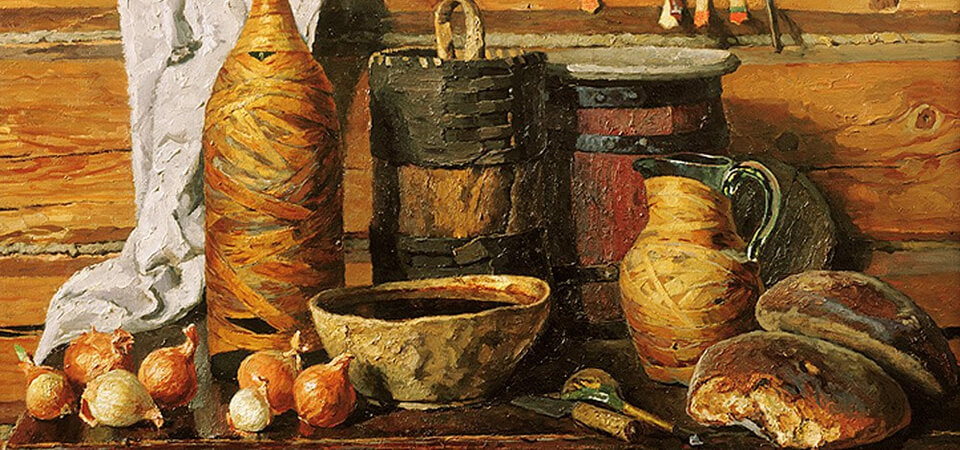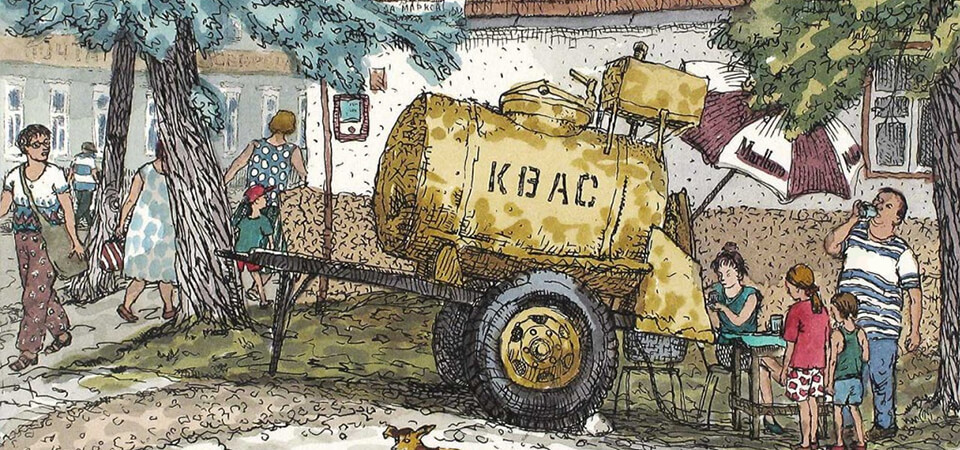Kvass what is it
Kvass what is it
How to Make Kvass
This post may contain affiliate links. Read full disclosure here.
Every culture that has bread has a traditional way of using stale bread. Traditional Kvass takes forgotten stale bread, usually rye bread, and turns it into a bubbly probiotic beverage that’s incredibly satisfying (and just a tad alcoholic).
Stale bread happens to everyone at some point or another. If it’s a light soft white loaf, you can do as the French do and turn it into a rich french toast by adding milk and eggs.
What we in the US call “french toast” and often make with perfectly good fresh bread, the French call “Pain Perdu.” That means “forgotten bread,” basically bread that has gone stale and needs a bit of livening up to be fit for the table.
The Russians take a distinctly different approach with their stale bread, perhaps because most commonly that leftover bread was a dark and heavy loaf of rye. When life gives you stale rye bread, it’s time to make bread kvass!
What is Kvass?
Kvass is a traditional eastern European drink that dates back to at least the middle ages, if not well before. Back when water sanitation was pretty questionable, it was much safer to drink fermented alcoholic beverages than water alone.
Kvass isn’t particularly alcoholic, and most batches are somewhere between 0.5 and 1% alcohol. That’s not enough to sanitize contaminated water, but the water was always boiled first.
Boiling stagnant water would have been enough to render it safe, but not tasty. Kvass adds flavor, probiotics and a pleasant fizz with the addition of stale bread and a bit of patience.
Historically, kvass was a beverage made from rye bread. Sometimes fruit, honey, and herbs are added as flavorings, but the dominant fermentable sugar in traditional kvass comes from toasted rye bread. Beets, another Russian peasant staple, were often added for flavor, but these days westernized versions of beet kvass recipes skip the rye bread altogether, using only beets instead.
When Kombucha became so popular as a new age probiotic beverage, companies began searching for other traditional probiotic beverages to modernize and commercialize. These days you can find many sweet fruity lightly fermented beverages labeled “kvass” but very few actually contain rye bread or have much to do with the traditional drink.
How to Make Kvass without Yeast
The health benefits from kvass come from a long slow ferment that slowly breaks down the nutrients in the stale bread. Adding a big spoon of modern commercial yeast completely overpowers the natural cultures, and while it does yield a fizzy beverage quickly, it’s a rather inelegant solution.
Using commercial yeast is also not historically accurate and will produce a much harsher beverage. Something harsher than what Russian peasants tolerated isn’t likely to please your modern palate…
Traditional kvass cultures are wild would have been started originally in much the same way as sourdough, and then continually propagated from there. The best way to start kvass is to use a spoonful of sourdough starter.
A white flour starter works fine, but obviously, a rye sourdough starter would be more traditional. (If you don’t want to try your hand at starting your own, you can purchase one either from cultures for health or on Amazon.)
Adding sourdough culture to homemade kvass.
Lacking a sourdough starter, a few spoonfuls of yogurt whey with active cultures and then a teeny tiny pinch of commercial yeast will give you a good approximation.
Sweeteners for Making Kvass
For a stronger drink, with a tiny bit of residual sweetness to balance out the sour notes from the lactobacillus, it’s helpful to add some kind of sweetener. Birch sap or birch syrup from tapping birch trees (similar to tapping maple trees for maple syrup) is traditional, but honey or maple are also good choices. Lacking that, a bit of sugar (or brown sugar) works too.
A similar traditional drink known as birch beer is made using birch sap, but without the bread. It’s said to have medicinal properties due to the minerals in the birch sap, and perhaps some of the healing properties commonly associated with traditional kvass result from the use of birch sap as a traditional sweetener. If you want to try this variation, try sweetening your kvass with commercial birch syrup, which has a very distinct (and lovely) flavor.
Birch trees are tapped for both fresh sap and boiled syrup, just like maple trees.
How to Make Kvass
The first step in making kvass is toasting the bread. This does a few things:
If you have slices of bread, just pop them in the toaster until they’re golden (but not burned). Those slices will then be broken up into cubes by hand after toasting. If you have a big loaf that went stale, cube the bread, place it on a baking sheet and bake it at 350 for about 10-ish minutes unit’s it’s very dry and toasted, but not burnt.
Place the bread cubes in whatever you’re using for a fermentation vessel. A big bowl works, but a big mason jar is a bit neater. Add the remaining ingredients, including sourdough starter, honey or other sweeteners, and any optional flavorings (fruit/herbs/etc).
Cover the bowl with a towel, or if using a mason jar, put on the lid loosely. If you have a home mason jar fermentation kit, now’s a good time to use it but it’s not strictly necessary.
A regular two-part mason jar lid, or a plastic mason jar lid works just fine so long as you remember to burp the jar daily so gasses don’t build up too much. (You can also just seal the jar loosely to let air escape.)
Even using a cold sourdough starter from the fridge, mine had tiny bubbles rising within a few hours.
When is Kvass Ready?
Making homemade kvass is a balance between allowing the mixture to fermented enough to have flavor and fizz, but not letting it ferment so much that it’s overly sour. Traditional kvass was only lightly carbonated, with bubbles just barely detectable in the final drink. Since our palates are used to CO2 carbonated sodas, it likely won’t be “carbonated” as you generally think of it today.
Depending on the temperature of your house, the amount of sugar used and the activity in your starter, the kvass will be ready in about 2 to 7 days. After two days, give it a taste.
It should be lightly carbonated, a tad bit sour and a tad bit sweet, with leftover malty notes from the toasted bread. If you want a more tangy flavor, allow it to ferment a bit longer. Either way, once it’s done to your liking, filter the homemade kvass through a fine-mesh strainer and bottle it.
How to Bottle Kvass
Bottling kvass helps build a bit more carbonation, and storing the bottles in the fridge helps keep the brew from over-fermenting and becoming too sour. The simplest method for bottling kvass is to strain it into mason jars with two-part lids, leaving about 1” of headspace.
Tighten the lids all the way and store in the refrigerator. They’ll keep for 7 to 10 days, slowly building a bit more carbonation.
Kvass can also be bottled like kombucha in reusable flip top Grolsch bottles for a more elegant presentation. Still, regardless of the bottle, they can not be stored at room temperature for more than a few days. Keep kvass in the fridge, or in a cool basement, so that the bottles don’t over carbonate.
Adding Extra Carbonation to Homemade Kvass
As I mentioned previously, traditional kvass is only slightly carbonated. That said, if you want more bubbles, there are modern solutions.
Add a bit of extra sweetener (sugar, honey, etc) at bottling time, somewhere around 1/2 tsp per pint, and a very tiny pinch of commercial yeast. Mix it in and then cap the bottles tightly.
Allow these to culture at room temperature for about 12-18 hours, and then store in the refrigerator. That commercial yeast will consume the extra sugars and rapidly build carbonation that’s much stronger than a sourdough culture can accomplish.
This extra carbonation step is optional, and not something they had in Eastern Europe in the middle ages. That said, it is tasty, and if this is what you need to switch from soda to a traditional probiotic beverage then it’s still a win.
Homemade Kvass Recipe
Homemade kvass is a traditional probiotic beverage made with leftover stale bread. It’s bubbly and refreshing, the perfect drink for a hot summer day.
What Is Kbac Drink?
Last updated on August 18th, 2021
Every country in the world has a staple drink, something that is really so unique to them that it embodies the culture as a whole.
made from various bases, they vary in taste, abv, non-alcoholic, pop soda, or just flavored waters.
In the Baltic and Slavic countries, there is a drink called Kbac and if you have never heard of it, take a look at what the Kbac drink is.
Kb or kvass is a traditional fermented rye bread drink.
It typically has a 1% alcohol level and would be considered non-alcoholic.
Variants can include fermented wheat or barley and a range of fruits or birch sap.
Kb is used in a lot of traditional dishes and is considered to have some health benefits.
Kb is very similar to a dark beer stout but with almost no alcohol.
Apparently, when you leave it in the fridge longer and ferments more, it will become more alcoholic.
Making rye-based drinks like Kbac is a traditional beverage that was created during the middle ages and is very similar to other malt-based fermented beverages of the early Egyptians.
Let us explore this exciting drink more in detail;
Table of Contents
The History Of Kbac
Origin
The Slavs invented kvass.
During the middle ages around 996, the phrase KVASS was recorded in the Primary Chronicle, outlining the events that took place in the Kievan Rus.
The word was mentioned in the English texts around 1553. Kvass was a national drink in Russia and was drunk by all social classes.
On average, a Russian consumed between 200 to 250 liters of kvass per year!
What Is Kbac Made From
The Base
Kb has a base product that is usually rye bread.
The traditional type of kbac usually uses dark or black rye bread that tends to give it a richer flavor.
You can also use croutons if you cannot find traditional rye.
You can use barley or rye for the lighter varieties, which gives it a less wild taste.
The Flavoring
Several different fruits are used to give Kbac its flavor.
Popular fruits include apples, berries, and raisins for fermentation.
There is always a yeat starter added for the fermentation to start.
If fruits are used, then cane or other sugars are usually left out.
The Procedure
Traditionally Kbac would be made by heating the ingredients until it forms a mash and then subjecting it to heat for several hours.
After it has been heat-treated, it is then diluted with warm water.
The yeast and flavoring are added and then left in a warm place for several days to continue the fermentation process.
It is lautered like beer once ready.
And a portion of the mash is kept as a starter for the next batch.
Kvass is never boiled, and it is this critical aspect that distinguishes it from traditional beers as it contains microorganisms that are responsible for lacto fermentation.
Is Kbac Alcoholic?
Knack is not alcoholic, containing 1% alcohol, which is solely due to the natural fermentation.
When it is placed in the refrigerator, it can increase the percentage to around 2.5%.
Knack is drunk by children all over since it is considered to be Non-Alcoholic.
What Does Kvass Taste Like?
Kvass has a very distinct wild taste.
Some say it tastes sour and bread-like, while others say it tastes yeasty, pickly, and like stout.
It reminds a bit of a good milk stout but definitely with a rye undertone.
The darker rye bread kvass tends to be on the more accessible side, while the lighter wheat or barley-based kvass is fruitier, yeasty, and sweet.
The authentic Russian kvass has to be sour to be genuine; it also has a slightly bitter taste to it, like a beer.
Is Kvass Fermented?
Kvas is traditionally made by fermenting rye bread, wheat or barley, water, sugar, and yeast.
The more traditional recipes in Latvia and Russia call for a fermentation process to be at least between 2 to 8 days.
The fermentation is done at room temperature, and then the kvass should be stored in the refrigerator.
Some kvass flavors made from beet, for example, can last for almost two months in the fridge.
The longer the kvass is kept, the more alcohol percentage it will gain.
Is Kvass Like Kombucha?
Kvass and kombucha are not the same at all.
While both are fermented drinks, kvass relies on the Lacto-fermentation process depending on the added or natural sugars to ferment.
Kombucha relies on the SCOBY for its fermentation process.
What Is A SCOBY?
A SCOBY is an acronym used for Symbiotic Culture of Bacteria and Yeast.
It is like a cellulose mat, a rubbery and alien-looking round disc of goodness that floats inside the liquid and ferments various styles of drinks like kombucha and foods like kimchi.
Is Kvass Popular In America?
Since around 2010, kvass made its appearance in the USA, there was one producer, and while not sure that Americans would be tough enough or brave enough to drink kvass, they stuck it out.
Today there are more than ten commercial kvas manufacturers in America, and its popularity is steadily rising as a health drink.
Kvass is full of probiotics and is said to be a healthy drink to drink.
Popular Kvass Brands In America
Currently, you are able to buy Kvass or Kbac under the following brands.
Although you will not be able to walk into any corner store and pick up a bottle of kvass, you are able to source these brands online, or if you are fortunate to have a Balkan style deli near you, chances are you might be able to find some imported brands of kvass.
The Health Benefits Of Kbac/Kvass
Beverages that use a Lacto-fermentation process are full of enzymes, micronutrients, antioxidants, and probiotics that are known to be very beneficial for gut health and full-body healing.
Beet kvass, in particular, is the most popular variety of kvass that is recommended for healthier living.
Beet contains all the best natural sources of antioxidants.
It is considered a blood tonic, promotes regular bowel movement, cleanses the liver, and aids in digestion.
Beet kvass has a rich earthy taste.
Beet kvass is one of the longer-lasting varieties and is commonly flavored with mint for an exceptional taste.
Can You Make Your Own Kvass?
Yes, you can make a wide variety of flavored kvass drinks; several recipes are available that you can look at.
They range from the very traditional dark rye, beet, and the lighter fruitier varieties that are sweet and slightly tarty.
Always follow the recipe instructions carefully, and you will be well on your way to the first batch of Kb.
Conclusion
Now that we know precisely what kbac or kvass is and how healthy it is to drink.
It is not hard to see why Russia and the Balkan countries consume so much of it annually, and even children enjoy drinking it regularly.
Although it is not well known in America and readily available commercially, it is so easy to make at home.
You can decide on a recipe that will suit your taste palate and give it a try, whether a dark rye style, a rich red beet, or a crispy transparent apple, mint, and ginger batch you need to try it at least once and decide if the fuss is worth it.
I’m the owner and blogger here at SodaPopCraft.Com. I’m a soft drinks enthusiast and I’m bringing you all I know and research from the world of Soda Pop & Kombucha soft drinks.
I hope it inspires you to make your own healthier fizzy drinks at home.
Kvass: A Fermented Beverage with Probiotic and Cancer-Fighting Benefits
If you haven’t seen kvass at the grocery store, chances are you soon will. Already produced in places like Brooklyn and Pennsylvania, kvass is quickly catching up with kombucha as the hottest probiotic drink.
Kvass is a traditional fermented beverage that has a similar taste to beer, except it’s healthier because it provides probiotics. It’s actually made from stale, sourdough rye bread or beets, meaning it’s cheap and sustainable to make.
In the U.S., kvass is pretty much synonymous with lacto-fermented beet juice or beet brine, since this is the more popular type.
What does kvass taste like? While it’s tart when not flavored, it can be quite refreshing when mixed with fruits (such as raisins and strawberries) and herbs (such as mint). It typically has a tangy, earthy, salty flavor and can be an acquired taste, though many end up craving it due to the nutritional benefits it offers.
In addition to its impressive probiotic content, kvass is considered a tonic for digestion and an excellent thirst quencher. Below we’ll look more closely at its body-wide benefits, plus how to make it yourself at home.
What Is Kvass?
Kvass is a fermented drink that originated in Eastern Europe. It’s still most popular in places such as Ukraine and Russia, but it’s becoming more widely available in the U.S., Australia and other parts of Europe.
It’s sometimes also called “bread soda” or “Russian cola.”
Even though it’s gained attention recently, as probiotic drinks have become a health trend, kvass is anything but new. It was first mentioned in the “Primary Chronicle,” an ancient history book of Slavic people, in the year 996 A.D., meaning it’s more than 1,000 years old.
It’s common to see barrels of kvass on the streets of Moscow in Russia because it’s considered a tonic for digestion, not to mention that it’s hydrating. Some suggest that kvass is safer than drinking water! That’s because fermentation helps lower the pH of water enough to kill some bad bacteria, which means it’s protective when drinking water is questionably contaminated.
Russians have been consuming kvass for centuries. The wealthy made various kinds of kvass using rye bread or pears, raisins, cherries, bilberries and lingonberries. Peter the Great even used it to add fragrance to his steam baths by splashing kvass on hot stones.
No traditional Ukranian home was without its bottle of beet kvass, according to Lubow A. Kylvska, author of “Ukranian Dishes.” Kvass was said to be “handy and ready when a pleasing, sour flavor had to be added to soups and vinaigrettes.”
Folk medicine values beets and beet kvass for their liver-cleansing properties, and beet kvass is widely used in cancer therapy in Europe. It has been reported that beet kvass is an excellent therapy for chronic fatigue syndrome, chemical sensitivities and allergies, and because it is an excellent source of probiotics, it can help with digestive problems.
Is kvass the same as kombucha?
Kombucha is another probiotic drink that has similar benefits and a naturally tart taste, but the two are made with different primary ingredients.
Kombucha is made with tea, sugar and often fruit. It also requires a symbiotic culture of bacteria and yeast (SCOBY) to ferment and tends to be a bit sweeter.
Both drinks are essentially “alive” since they contain active bacteria that support digestion. One advantage that kvass has is that it possesses both benefits of probiotics along with nutrients from the beets.
Is kvass an alcoholic drink?
While kvass is considered a non-alcoholic beverage, containing around 0.5 percent to 1 percent alcohol, the longer it ferments, the more susceptible it is to becoming more alcoholic. It typically doesn’t contain enough alcohol to impair someone’s judgment or cause other side effects, but strong varieties may potentially make people feel as if they’ve consumed a small amount of alcohol.
It is made with yeast?
It depends on the specific type of kvass. Traditionally, it was not made with yeast, but today some types made with stale bread use dry active yeast to help the fermentation process.
The oldest recipes used bread and beets to provide fermentable sugar instead of adding yeast. This is said to result in a better taste than when yeast is used.
Yeast can make the process easier, but it’s not necessary to use. Some people prefer using sourdough starter instead, which may make the taste more mild and pleasant.
Nutrition Facts
Kvass is considered a “functional food” because it offers a wide range of probiotics and nutrients, including vitamin B12, selenium and manganese.
If made with beets, it also contains a good dose of antioxidants, natural nitrates, vitamins A and C, and potassium.
Below is the nutritional background based on a four-ounce serving of kvass made with beets (according to the U.S. Department of Agriculture). Note that nutrition content varies based on the exact ingredients used, as the bread variety offers different nutrients.
One four-ounce (1/2 cup) serving of kvass made with beets contains about:
Benefits
1. Great Source of Probiotics
Since kvass is considered one of the great probiotic foods, there are many benefits, such as improving intestinal tract health and enhancing the immune system, which makes nutrients more available to the body.
Probiotics in your diet, including from kvass, have been shown to increase gut microflora diversity and support metabolic activity, while also potentially having appetite-reducing effects. Probiotic drinks may also help reduce symptoms of lactose intolerance, including diarrhea, and decrease the prevalence of food allergies.
Formerly, we had plenty of probiotics in our diets from eating fresh foods from good soil and by fermenting our foods to keep them from spoiling. The modern ways of agriculture, refrigeration and preparing food have eliminated probiotic foods for too many Americans.
Not enough probiotics can mean digestive disorders, skin issues, candida, autoimmune disease, and frequent colds and flus.
2. Excellent Liver Cleanser
While many think that alcohol is the only reason for liver problems, disease-causing inflammation is also caused by poor eating choices.
Beets and beet greens are rich in antioxidants and potassium, and as such, they help fight free radical damage that can contribute to the aging process and some diseases.
Like beetroot juice, beet kvass and beets help naturally cleanse the gallbladder, improve bile flow, remove plenty of toxins and promote regularity.
3. Perfect Blood Tonic
Beets contain phytonutrients called betalains that are found in the pigment of beets. (They are what causes your hands to stain.) These betalains help create red blood cells, making beet kvass an excellent blood tonic by alkalizing the blood.
Why is this important? When your bloodstream becomes too acidic, it causes inflammation in the body and depletes the body of calcium because it is trying to balance out the pH levels.
One of the best things we can do is consume more alkaline-promoting foods, such as beets and leafy green vegetables.
4. May Help Reduce the Risk of Cancer
Most significant of all, beet kvass may help as a natural cancer treatment because of the combination of antioxidant and anti-inflammatory properties available.
According to a 2014 report published in the journal Nutrients, beetroot is also considered as a therapeutic treatment for inflammation, and its antioxidant and anti-inflammatory properties may help reduce the risk of certain types of cancer.
5. Beet Kvass Is Rich in Valuable Nutrients
Because beets are high in vitamin C, beet kvass helps boost your immune system and can help stave off the cold virus.
It’s also very high in manganese, a mineral that is needed for maintenance of healthy bones, plus liver, kidney and pancreatic functions. Beet kvass also contains the B vitamin known as folate, which may help reduce the risk of birth defects.
How to Make
Most brands of commercialized kvass lack many of the benefits associated with the traditional types because they’re low in probiotics. This is why fermenting your own is recommended.
Making homemade kvass takes a little practice, but overall it’s simple and inexpensive to make. The simplest recipes include ingredients like beets, water and salt.
The water and salt create a brine so the beets pickle, and eventually the brine becomes kvass with a slight effervescence. When the beets ferment they naturally produce a bit of bubbles (same with kombucha), so you can expect the finished product to be slightly fizzy.
A few helpful tips:
Recipes
Ready to start making kvass at home? Below are two popular kvass recipes.
The first recipe takes a bit more time and uses sourdough. The second is a recipe for beet kvass and takes only a few minutes to prepare.
Useful tools and things to know:
Kvass Using Bread (recipe makes about 2 1/2 quarts)
Beet Kvass (recipe serves 5–10 people)
Risks and Side Effects
Among people who are new to drinking probiotic drinks, kvass can potentially give them stomachaches or other mild side effects at first. Introduce this drink to your diet slowly to minimize any reactions, such as nausea, heartburn or bloating.
Kvass side effects seem to be more of a risk when making it yourself because contamination is possible. If you’re going to make your own, be sure to use sterile equipment, clean working spaces and high-quality ingredients.
If you’re allergic to wheat or beets, avoid having kvass since this can trigger a reaction.
Kvass – Traditional Russian Drink
Kvass is a traditional Russian drink which appeared in Russia long time ago. It was drunk daily by all people in Russia regardless of their wealth or social status. The drink was very nutritious and had a sour-sweet taste. Today, kvass is a soft drink, but in ancient times it used to be as strong as wine. Kvass also used to me the main drink during festivities or at funerals. People in Old Russia believed that kvass has certain healing properties. So, they gave it to people who were seriously ill.
Origins of Kvass
Kvass was first mentioned in the year of 989, when the Kiev Prince Vladimir ordered to treat people with honey and kvass. The farmer Solodkin is believed to have been the person who invented the method for making the original Russian kvass. The grain he was keeping in his barn accidentally got wet. In order to dry the grain, Solodkin took it out and put it under the sun. Thanks to the heat and moisture, the grain sprouted. Therefor he had nothing to do but to grind it into flour. Then Solodkin kneaded the dough from the flour, but it did not grow in volume. On the contrary, the dough decreased by half, since malt is not yeast. His attempts to bake bread failed, as the bread was sour and half-baked.
To make the situation better, Solodkin put the dough in water, hoping that water would take away the sour taste from the dough. However, after a couple of days the dough fell to the bottom, and the fermented water had a nice taste: sour and hopped. That was the first kvass.
Origins of the name “kvass”
“Kvass” is an original Russian word which means “sour drink” and characterizes the taste of the drink.
How kvass was made in Russia
There used to be thousands of recipes for making kvass in Russia. The drink was made using such grain as rye, oats, millet, barley. Firstly, the grain was soaked, then sprouted, dried, ground, then the kvass was made. In old times, it took a long time to make kvass. It sometimes took up to 70 days. People used to always have kvass at home. They poured it into barrels and kept it in the cellar.
Where kvass was made
Kvass was made everywhere: in cities and villages, at hospitals and barracks. It was also brewed commercially at kvass breweries. The profession of kvass brewer was very prestigious. They experimented with the drink, adding various fruits and berries such as apples, pears, cranberries, etc. to it.
Various herbs such as wormwood, tutsan, hop, etc. were also added to kvass. Then currant, raspberry, strawberry, and mint leaves were added. Rye kvass with herbs was considered a drink for the poor. Honey kvass was the best and most expensive types of kvass.
What kvass was drunk with
In the past, kvass was drunk with radish, rye bread, and green onions. This meal was believed to have satisfied hunger and thirst well. This type of meal was traditional during the lent. In the lent period people drank kvass three times a day.
That’s all about kvass and its origin. We hope you liked the article about the traditional Russian drink.
What is Kvass
Kvass, pronounced kva:s (kuv-as) is a traditional Russian probiotic drink that dates back to the middle ages. Think of it like a non-alcoholic Russian beer. Traditionally, Kvass is made by fermenting bread, usually rye bread but can also be made or flavoured using fruits, raisins, herbs and honey amongst many other things. You are basically limited by your imagination on this one.
The reason you have probably never heard of Kvass or are only starting to hear about it now even though it’s been around since way before you were born is because of the mindful drinking and health movement.
“Fermented fizzy bread drink” doesn’t sound very appealing, which is what Kvass is. However, you may have noticed Kvass is similar to another fermented probiotic drink, Kombucha.
Once Kombucha began gathering a large community of fans it gave this whole trendy attachment to probiotic drinks. And don’t worry if you don’t know what a probiotic drink is, we will get into that shortly.
Because of this, people started looking into other probiotic drinks that they could commercialise and monetise on to get ahead of the trend. Enter Kvass. The Russian cousin of Kombucha.
Once commercial marketeers got hold of this drink, they replaced the bread with more appealing ingredients, such as strawberries. Replaced the unappealing “fermented rye break fizzy drink” name with the much more appealing “Lightly sparkling, fruity, probiotic fermented kvass” and that’s just about where we are at today with it.
The great thing about the rise of kombucha is that it really started to shed light on these traditional fermented drinks that have been long lost in history or so cultural that people in other parts of the world simply wouldn’t know about or be able to enjoy them, Kvass is very popular around Russia but I never heard of it till commercial kvass parodies started showing up on shelves around England. Sure, your mass produced versions won’t be very traditional but they allow us to become aware of them.
Then we can just head over to google and find an article like this one to learn how to make the real deal.
What’s a probiotic drink
Probiotic drinks are what are also known as “functional drinks”.
In our bodies we have a mixture of both good and bad bacteria, always fighting for balance. When we are ill or have an infection, that’s the bad bacteria taking over. Good bacteria helps eliminate it and make you feel better. Simple really
Probiotics are made up of live good bacteria. So ingesting good bacteria in your body can only lead to strengthening your good bacteria and helping you feel your best. These healthy probiotics are made when live yeast ferments. So you can find them in pretty much any fermented drinks and food.
Usually, in the business of drinks we kill bacteria. We don’t want anything funky like E-coli bacteria running around our bodies do we? So drink companies and producers use a combination of preservatives, acids and heat. Bringing down PH levels and pasteurizing foods and drinks to make an unliveable environment for bacteria.
Which is great. Don’t let people tell you these preservatives and hard to pronounce acids are all bad. Having them means we are unlikely to die from eating a piece of cheese.
However, this does also kill off any form of good bacteria in a drink. So creating a fermented drink, in a sterilized vessel and keeping a keen eye on it will create a thriving place for good bacteria to live.
Kvass health benefits
Now we know all about what Kvass is and how it works. Let’s quickly cover some stand out health benefits before jumping into our basic Kvass recipe.
Helps balance the good bacteria in your body
May also help keep your heart healthy by lowering LDL (“bad”) cholesterol and blood pressure.
Boosts your immune system
A quick note on yeast
The key to a good fermentation is the yeast. Without it, your liquid just wouldn’t ferment. Yeast is something that is easy enough to get, in fact its in the air around us. That white powdery thing on pineapple leaves? Yeast. Its everywhere.
Leaving your kvass without yeast is still likely to ferment in optimal surroundings. What we are creating is a breeding ground for yeast after all. But getting that fermentation can be difficult and unpredictable when attempting to use yeast in the air.
So what we need to do is kick start out fermented goods with some kind of yeast starter. This could be anything from adding a dash of a previous fermented goodies, shop bought brewers yeast such as white wine yeast. Or a ginger bug…






